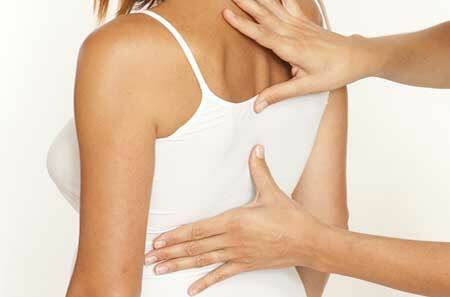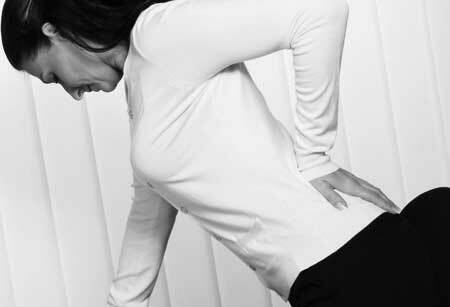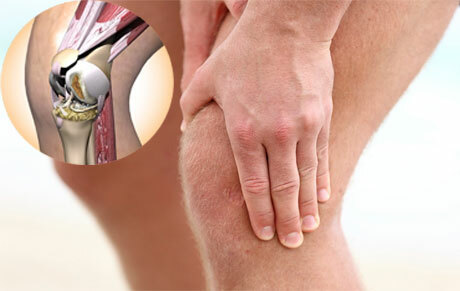The loin of a person is the "cornerstone" of his spinal column. Everyone knows that the lower the pelvic region, the thicker and more massive the lumbar vertebrae. It is clear, because they have to withstand a greater burden than, for example, cervical vertebrae.
In addition to its own mass, a person regularly "burdens" his weight. For example, winter clothes, together with underwear, with a shopping bag or a backpack behind their shoulders, may well have a mass of 10 - 15 kilograms. And most of this weight falls on the lower back.
In addition, a person is characterized by economic activities. And the transfer of goods, both in the hands, and on the shoulder, on the head, causes a load on the lumbar vertebrae. And not so the duration of the load, as its force of influence and distribution on a small area, and especially the angular loads, is important.
For example, if you sit on the couch and sit on the shoulders of the baby and gently stand with him, keeping your back straight, the harm to the spine will be inflicted far less than when the back is tilted sideways to an insignificant angle, with the same toddler on the shoulders.
Therefore, osteochondrosis of the lumbar spine and acute conditions associated with its consequences and complications is the most common cause of back pain with which people turn to therapists and neurologists.
Contents
- 1 Lumbar osteochondrosis - what is it?
- 1.1 Causes of development of lumbar osteochondrosis
- 2 Symptoms of lumbar spine osteochondrosis
- 3 Exacerbation of lumbar osteochondrosis, what to do?
- 4 Treatment of lumbar osteochondrosis - drugs and exercises
- 4.1 Complications of lumbar osteochondrosis
- 5 Prevention of lumbar osteochondrosis
Lumbar osteochondrosis - what is it?

As it has been repeatedly stated, osteochondrosis is a process of degeneration and destruction of intervertebral disks - cushioning "pads" located between vertebrae. In the lumbar region, the disks are the thickest, but also the weight that they "take over" is also serious.
Dystrophy( malnutrition) and subsequent degeneration( disruption) of the discs occurs due to increased stress during the day, lifting weights, and also as a result of aging. Osteochondrosis is a completely normal process of wear of cartilaginous tissue, in which it loses its elasticity and elasticity due to dehydration.
Therefore, in the "peacefully" lumbar osteochondrosis there is nothing terrible. This change in intervertebral discs is as natural as changing a person's face from the age of twenty to fifty, both in the photo and in reality.
Scary another : this process can suddenly begin with an attack of acute pain in the back, which "cuts the person" out of the rhythm of life and puts him to bed. Another cause for concern is conduction sensitivity disorders, in which there is numbness in the leg or motor impairment, when weakness in the foot appears, uncertainty and "spanking" the foot with gait and muscle weakness.
All this - the signs of osteochondrosis of the lumbar spine, which manifested itself in its aggravation.
The modern name for the set of signs of osteochondrosis is dorsopathy, or "back disease".This definition includes:
- discogenic disorders( protrusions, hernias);
- reaction of adjacent vertebrae( development of osteophytes);
- influence of muscle tissue( spasm and circulatory disorders);
- is a distant disorder of sensitivity and movement disorder.
Causes of development of lumbar osteochondrosis
All causes of lumbar osteochondrosis "lie on the surface".Therefore, we will not focus on them the attention of readers, but we will confine ourselves to a simple enumeration:
- The first and most important reason is our walking on two legs - it freed hands for work and created our civilization, thanks to this fact it became possible to write this article. As a result, the load on the spine increased, which four-legged mammals do not have. It can be said that osteochondrosis is a human disease;
- Excess weight, obesity. It simply "helps" to finish the intervertebral discs;
- Excessive physical exertion( weightlifting), lifting and carrying heavy loads at home( digging potatoes, moving furniture).In this sense, the work of the loader is professionally harmful in terms of the risk of developing the disease;
- Bad habits, "sedentary lifestyle."
Symptoms of lumbar spine osteochondrosis

As already mentioned, the very "osteochondrosis", which occurs in a healthy body, does not interfere with life at all. But with a significant destruction of discs, the reaction of surrounding tissues and nerves there is a "detailed" picture.
Not necessarily all symptoms will occur in a particular case, but most will coincide with the characteristic pattern:
- Back pain in osteochondrosis is very common. There are neurogenic and muscle pain. The intervertebral disc itself does not hurt, since nerves and blood vessels are absent in the cartilage. The pain is caused in the case of compression( compression) by a disrupted disc of the nerve root that emerges from the intervertebral foramen.
There is a very sharp pain or "lumbago", lumbago. The man with a snarl grasps at the waist and freezes, afraid to straighten. This pain soon acquires a "radicular" character, since the nerve root swells and "there is not enough room".
Therefore, the slightest concussion of the body leads to an increase in "radiculitis": shooting pains are provoked by coughing, sneezing, laughing, movement, trying to strain.
- Pain also occurs due to the involvement of the back muscles in the process of edema.
This edema is disturbed as the delivery of glucose and oxygen to the major muscles of the back, and the outflow of venous fluid with the products of vital activity of the muscles.
As a result, muscle tissue experiences a double "stress": chronic oxygen and food starvation, as well as self-poisoning with undeveloped lactic acid, which is formed during muscle work.
In this case, the muscle responds to this in only one way: a contraction that takes on the character of a chronic spasm. As a result, there are drawing pains in the back, a feeling of stiffness, at a considerable distance from the disc, which caused an attack of pain.
- Conducted disorders are important in the chronic process. In the event that the disrupted intervertebral disc has formed a significant hernial protrusion, it is already capable of pushing itself onto the nerve root.
If the compression of the spine has been described earlier with edema, then now there is a constant pressure of hard cartilage.

This causes progressive disturbances in the conduction of a nerve impulse from both the spinal cord to the executive organs( muscles) and backwards from the muscles, the skin to the spinal cord.
There are efferent and afferent disorders, appear:
- Complaints about the change in sensitivity( there is numbness and a decrease in sensitivity on the side of the thigh - in the form of lamphas), the pain that descends from the buttock under the knee and below. Sometimes there is a feeling of "crawling crawling" in the toes of the foot, sometimes a decrease in the temperature and pain sensitivity in the same zone;
- Movement disorders occur with constant compression of hernia centripetal, efferent nerves. There is weakness and uncertainty in the muscles of the lower leg and foot. There is uncertainty, and the inability to stand on toes and heels, the foot begins to "shuffle", develops the hypothyroidism of the calf muscles on the side of the lesion( the thickness of the calf decreases).
It is this process in the neglected state that leads to disability, since a person can not walk fast, much less run.
It so happened that the most vulnerable place in the lumbar spine is its place of support on the immovable sacrum, located in the middle of the pelvic ring.
This place in the anatomy designates L5-S1, that is, the interval between the fifth lumbar( the lowest) and the first sacral vertebra.
The fact that all the sacral vertebrae of a person are fused into one bone is implied. Sometimes, however, there are such anomalies as lumbarization and sacralization.
In the first case in the lumbar region 6 mobile vertebrae, due to the severed sacral, and in the second - 4, since the last, 5th lumbar vertebra loses mobility and grows to the sacral bone.
Also in this place, there often occurs a "slippage" of the superficial vertebra forward( antelisthesis) or backward( retrolistesis).All these disorders lead to a worsening of the situation in the back.
Exacerbation of lumbar osteochondrosis, what should I do?

First of all, you do not need to bring to attacks. But once aggravation of lumbar osteochondrosis has occurred, it is necessary at the pre-hospital stage to fulfill the following assignments:
- Completely to exclude physical activity;
- Lie in a comfortable pose on a hard surface, excluding the sagging of the back;
- It is desirable to wear a semi-rigid corset, to prevent from sudden movements and "distortions";
- Folding the legs in the knees on the side of the lesion reduces the tension of the nerve trunks and reduces the severity of pain;
- At the waist, you should put a massage pillow with plastic needle applicators, or use the Lyapko applicator. You need to hold 30-40 minutes, 2 -3 times a day;
- After that, in the lower back you can rub ointments containing NSAIDs( "Dolgit - cream", "Fastum - gel"), ointments with bee or snake venom( "Nayatoks," Apizartron ");
- After rubbing on the second day, you can wrap the loin in a dry heat, for example, a belt of dog hair.
Common mistake in the treatment of attacks of lumbar osteochondrosis is warming in the first day. It can be a heating pad, bath procedures. In this case, edema only intensifies and pain along with it. You can only warm up after the "highest point of pain" has passed. After that, the heat will enhance the "resorption" of the edema. Usually this happens on 2 - 3 days.
Treatment of lumbar osteochondrosis - drugs and exercises

To the above described principles of treatment of lumbar osteochondrosis, medicinal therapy is added on the first day, and after improvement, therapeutic gymnastics and procedures are a complex of exercise therapy in lumbar osteochondrosis, massage, manual therapy and various physiotherapy techniques.
Drugs is preferably administered intramuscularly, especially on the first day of the disease. Applied:
- Non-steroidal anti-inflammatory drugs for the removal of edema and inflammation: "Movalis", "Ketonal", "Xefokam";
- Central muscle relaxants( "Midokalm", "Sirdalud") - reduce muscle tone and relieve tension in the musculature;
Vitamins of group "B", for example, "Milgamma".
The use of chondroprotectors does not change the terms of incapacity for work and the percentage of indications for surgical treatment, therefore, the effectiveness of their use is not proven.
Exercises for osteochondrosis of the lumbar spine should be started carefully, without burdening. It is ideal to start physical therapy in water, when "removing" the load from the spine. This is a "medical aquagymnastics".

If conservative treatment is not effective, an operation is required, during which the destroyed part of the disc is removed, the compression of the nerve roots is removed, and a small elastic prosthesis is inserted.
Indications for surgery are persistent and non-curable pain, as well as the progression of weakness in the foot.
Complications of lumbar spine osteochondrosis
Above we described complications in various sections: protrusions and hernias, the appearance of acute pain in the back, the progression of sensitive( painful) and especially impaired disorders.
What is sad, often treatment and prophylactic measures for osteochondrosis do not begin with the full health, but only in the presence of complications, manifested by severe pain and impaired functions.
Prevention of lumbar osteochondrosis
The osteochondrosis of the lumbar spine, the symptoms and treatment of which we described, needs little to never annoy you:
- Avoid hypothermia, especially in the fall - spring period, falls in winter;
- Do not lift weights, but carry loads only with a straight back, in a backpack;
- Drink plenty of clean water;
- Do not overweight, your weight should match growth;
- Take up the treatment of flatfoot, if any;
- Do regular physical exercises;
- Intervertebral disks like when they are removed from the load. It can be on a crossbar, or swimming;
- Regularly( every five years), you can make a radiograph of the lumbar spine in two projections, or perform an MRI to know whether the enemy "hides".Then you will think before lifting weights;
With these simple recommendations, you can keep your back healthy and mobile for life.



